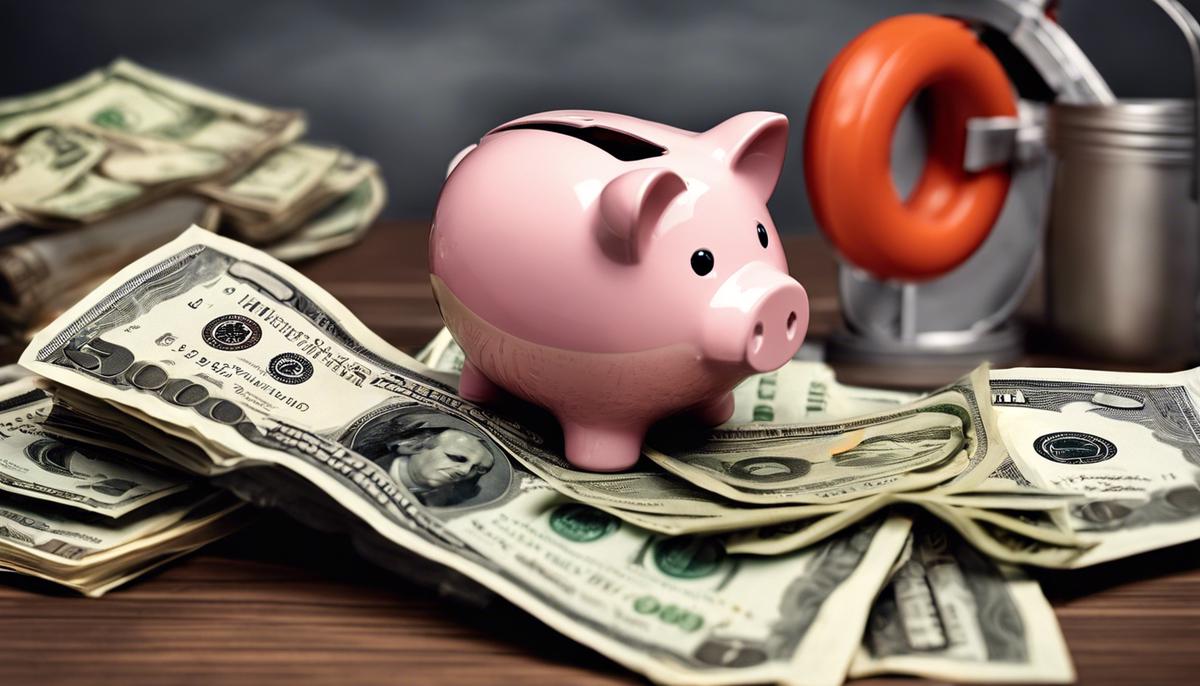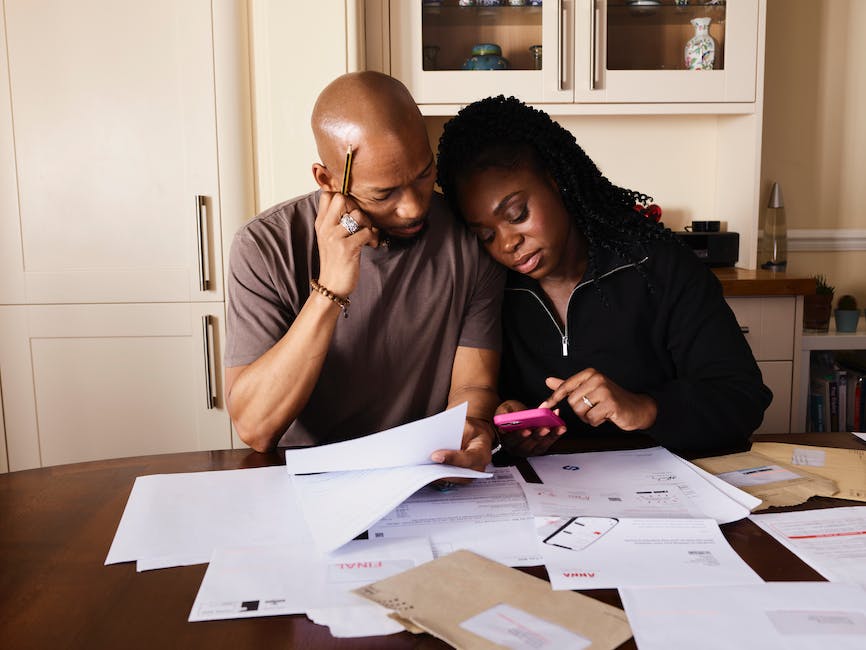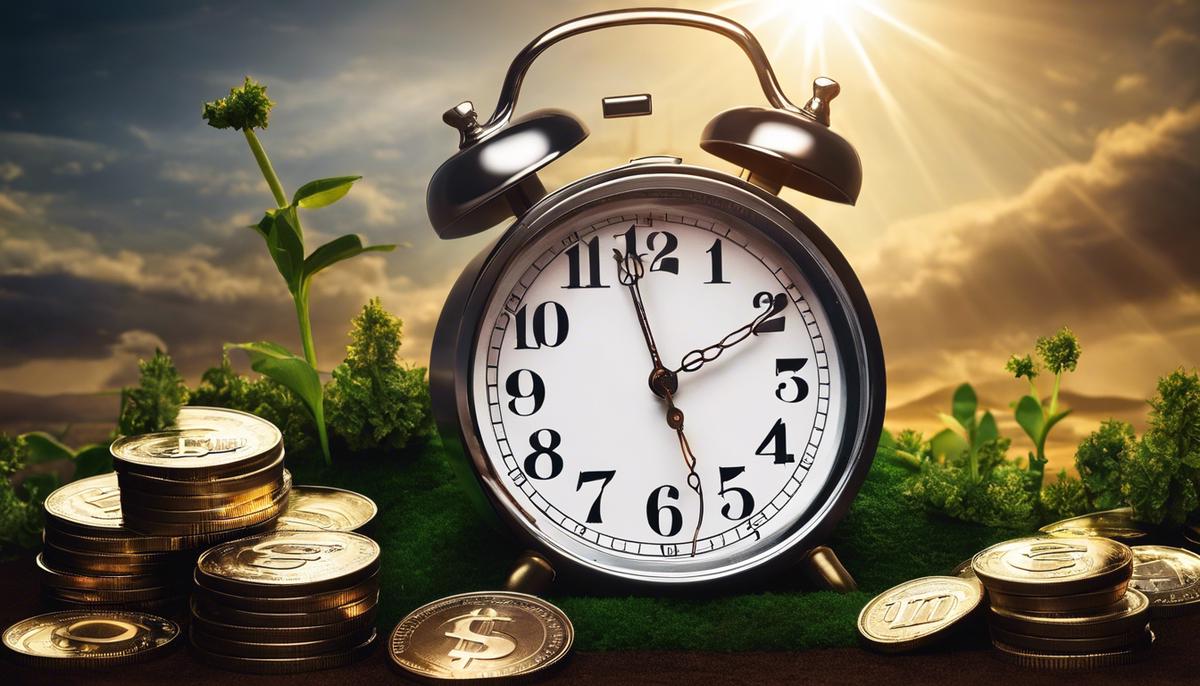Financial security is an essential aspect of anyone’s life. A key facet of achieving this much-needed financial stability is the establishment of an emergency fund. This fund, as its name suggests, is geared towards providing a safety net during times of unexpected expenses or financial difficulties. Without it, one is susceptible to potential risks that might derail financial stature and lead to high levels of stress. An emergency fund plays a vital role in not only preparing for financial adversities but also in making sound financial plans. In this article, we aim to empower readers by providing guidance on understanding the purpose of an emergency fund, assessing monthly expenses for accurate fund allocation, and practical ways to set up and grow the fund.
Understanding the Purpose of an Emergency Fund
Imperative Insight: The Significance of Building an Emergency Fund
In an unstable world where the future is drenched in unanticipated possibilities, one simple yet effective strategy to attain stability and security is building an emergency fund. Diverse in its application – from tackling sudden medical emergencies to addressing unexpected job loss, an emergency fund serves as an indispensable parachute during your freefall moments in life.
When navigating the unpredictable terrains of life’s journey, savvy entrepreneurs understand the importance of having a safety net. It is not about cowering in fear of unknown obstacles; rather, it’s empowering oneself to meet any unforeseen setbacks head-on. Financial security not only equips you with a solid buffer against life’s monetary potholes but also offers peace of mind.
In the journey of financial planning, the initial pitstop should be at building a robust emergency fund. This is not a one-size-fits-all scenario. Depending on your lifestyle, domain of work, and financial commitments, the size of your emergency fund may vary. As a rule of the thumb, however, it is recommended to have at least three to six months of living expenses tucked away safely.
A robust emergency fund plays a critical role in the longevity of your financial health. The first line of defense against sudden financial demands, it buys you time, allowing you to steer through emergencies without resorting to debt. This minimizes reliance on high-interest borrowing solutions such as credit cards or personal loans. Hence, an emergency fund is not merely a safety net, but it is a strategic step towards debt-free living.
A disciplined and well-executed savings strategy is fundamental in creating an emergency fund. With a myriad of online tools, digital platforms and automated saving options in today’s ever-evolving fin-tech landscape, setting aside regular contributions have been made effortlessly achievable.
Consider financial resources such as high-yield savings accounts or money market funds as potential homes for your emergency stash. They not only keep your money within arm’s reach during emergencies but also allows it to grow, albeit modestly, when not in use.
Adopting an entrepreneurial approach towards personal finance, it is essential to note that an emergency fund doesn’t mean squatting on cash. Instead, think of it as injecting liquidity into your personal financial blueprint. Just as businesses maintain liquid assets to manage sudden operational expenses or investment opportunities, individuals should maintain a cache of readily accessible cash to grapple unexpected life events.
In essence, establishing an emergency fund comprises one of the first steps to financial freedom. Acting as your financial anchor, it provides stability during volatile times, prevents the pitfall of debt accumulation, and paves the way for healthy financial habits. So, whether you are in the midst of your entrepreneurial journey or starting a new one, remember – adopting the habit of building and maintaining an emergency fund is the soundest investment on the road to financial resilience.

Assessing Your Monthly Expenses
Categorizing and Evaluating Your Monthly Expenses: A Roadmap to Streamlined Personal Finance
Having explained the compelling reasons for building an emergency fund, we switch gears and tackle the next critical subject: assessing and categorizing monthly expenditure. There is remarkable power in financial literacy and the adept management of overheads acts as the foundation of sound fiscal health.
Step 1: Harness a Comprehensive Overview
Analyze your income and expenses, noting the disparity between the two. Collating this information from bank statements, receipts, bills, and personal finance apps can be beneficial. This rigorous audit of personal finance illuminates where your money is allocated and ultimately offers some perspective on potential areas of adjustment.
Step 2: Segregate Expenses into Fixtures and Variables
Fixed expenses like rent, mortgage payments, car loans, and insurance premiums typically remain constant. Variable expenses, on the other hand, fluctuate and include groceries, dining out, entertainment, and shopping. Clearly distinguishing between fixed and variable costs simplifies the task of monitoring individual financial behaviour.
Step 3: Identify Discretionary Expenditure
Discretionary expenses are non-essential and optional. They may include dining out or purchasing the latest tech gadget. It’s important to understand these luxuries, as they offer sizable opportunities for saving. Streamlining these expenditures supports the establishment of prosperous fiscal habits, ultimately resulting in economic expansion.
Step4: Adopt a Methodical Approach
There are many tools available – ranging from spreadsheet software to sophisticated mobile applications – that can assist in devising a detailed and structured framework for expense categorization. These tools also offer considerable flexibility in tracking, organizing, and editing expense data.
Step 5: Maintain Flexibility
While a detailed framework is crucial, there should also be fluidity in your approach. Costs and income can change over time. Adapting and adjusting the budget to accommodate these variations is crucial to maintaining a robust fiscal structure.
Step 6: Simplify Investment Contributions
Investments constitute a significant portion of an individual’s financial portfolio. Designate a set amount or percentage of income towards investments, which includes your emergency fund, retirement savings, or stocks and bonds.
Step 7: Regular Review and Adaptation
In the dynamic world of finance, being proactive is key. This applies not only to investing and building an emergency fund, but also to diagnosing monthly expenses. Regular reviews result in increased awareness and an ability to adapt swiftly to financial challenges.
By mastering expense categorization in tandem with a robust emergency fund strategy, you’re setting the stage for a secure and prosperous financial future. This is the entrepreneurial approach to personal finance: pragmatic yet ambitious, disciplined yet flexible. By understanding and controlling our resources, we empower ourselves to look beyond the immediate horizon and navigate towards a brighter economic future.

Setting Up and Growing Your Emergency Fund
Incorporating Additional Income Streams
Every business-minded individual understands the power of diverse income streams. This strategy can be applied to personal finance to bolster your emergency fund. Don’t rely solely on your main job. Consider freelancing, investing in stocks or real estate, or starting a side business. This additional income can be dedicated to growing your emergency fund consistently.
Capitalizing On Windfalls
Periodically, you may receive unexpected money – an annual bonus, tax refund, gift, or lottery winnings, amongst others. While it’s tempting to use this for a luxurious vacation or the latest gadget, allocating it to your emergency fund can significantly boost your financial buffer.
Prioritizing Emergency Fund in Financial Decisions
When making financial decisions, remember to consider their impact on your emergency fund. For instance, if purchasing a car means diminishing your fund, consider whether it’s worth the risk or if there are more cost-effective alternatives.
Leveraging Technology
Use tech to your advantage. Fintech apps allow you to round up your purchases and invest in spare change, automate transfers to your fund, track your savings progress, and offer insights on how to save more effectively.
Constantly Educating Yourself
Knowledge is power, particularly in financial matters. Stay updated on economic trends, personal finance best practices, tax law changes, and anything else that may affect your financial health. This will allow you to adapt your emergency fund strategy to the changing economic environment and grow it consistently.
Networking isn’t only useful in the business world. Connect with like-minded individuals who prioritize financial security. They may offer valuable tips, resources, or even collaborative opportunities to increase your income.
Engaging in these practices is a testament to fiscal diligence and foresight. They facilitate the consistent growth of an emergency fund, bringing financial peace of mind a step closer. After all, a well-stocked emergency fund isn’t just about surviving financial setbacks; it’s about thriving despite them.

Achieving financial security is not a day’s work. It requires patience, discipline, and adherence to good financial practices. One of these practices is having an emergency fund. The fund is an indispensable tool that helps navigate through unanticipated financial hitches. By understanding your monthly expenses, you can set realistic and attainable savings goals for your fund. Several strategies can be leveraged to consistently grow the fund, such as automated transfers, the use of financial bonuses like tax refunds, or the adoption of a zero-based budget. Financial security is attainable, and an emergency fund positions you for the peace of mind that comes with financial stability.



